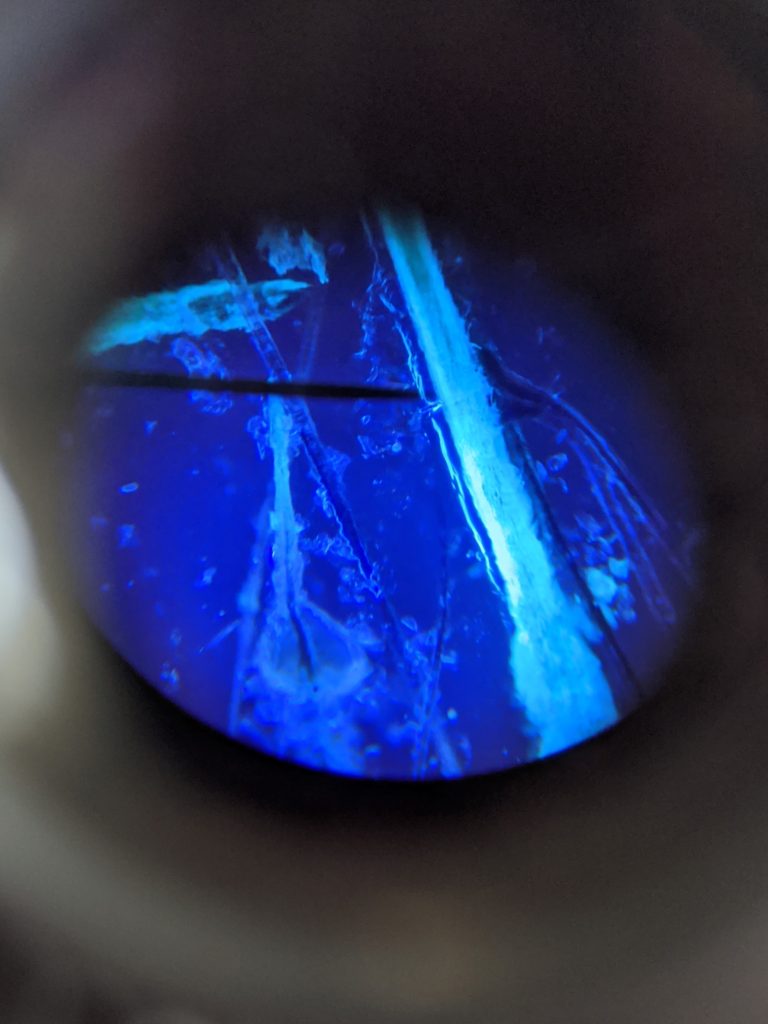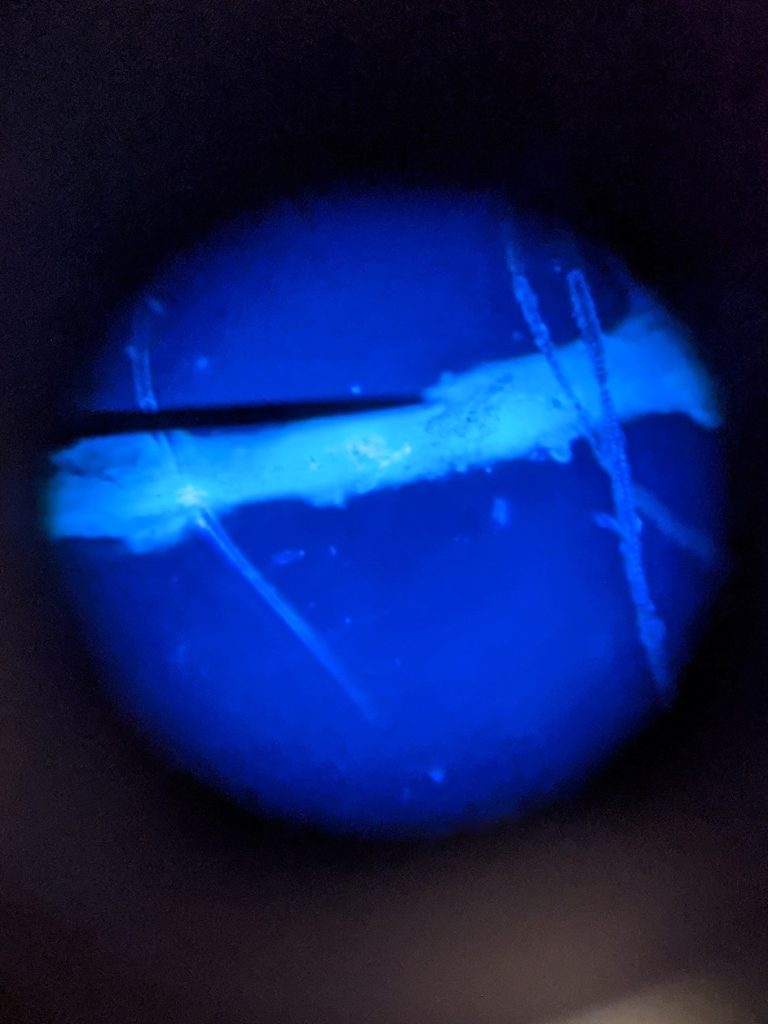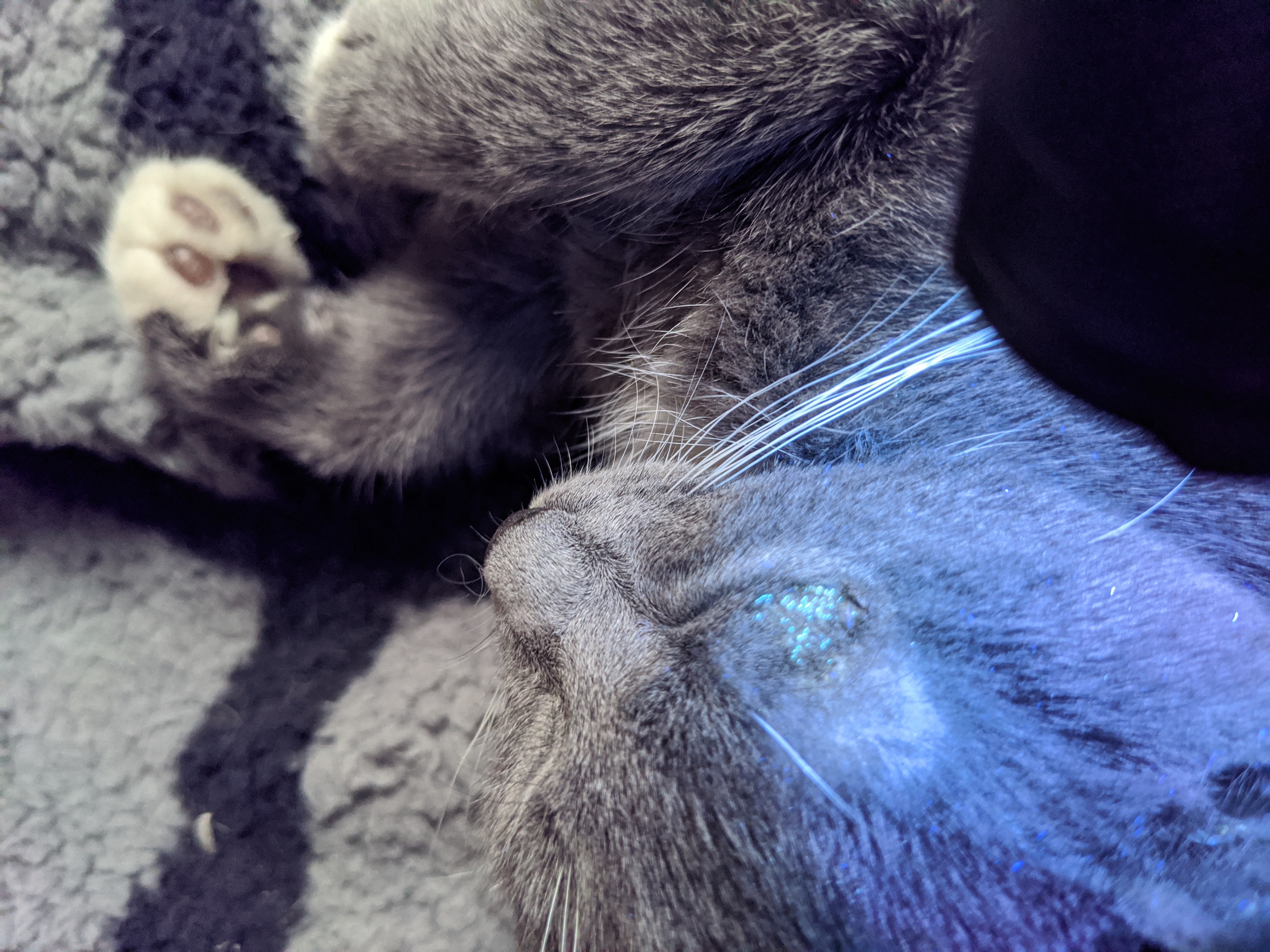I had heard that you could diagnose ringworm by looking at the glowing hairs under a microscope. However, when I first learned of this, I thought it seemed strange. After all, glowing hair diagnoses ringworm.
Then I started getting “ringworm” kittens from shelters that had glow, but didn’t have ringworm. And to be fair, some of them had glow that looked very similar to the glow you see with ringworm. So I started doing research.
Why do Ringworm Hairs Glow?
I’ll be honest, I don’t know exactly why ringworm hairs glow. What I do understand is that when infected with ringworm, the hairs themselves are infected. The hair loss is caused by the hairs breaking, not falling out, due to the hair “blowing up.” I also know that the hairs glow before the break, so you’ll see glow before you see hair loss.
And whatever makes the hair glow also changes the hair shaft. According to Dr. Moriello, “[ringworm-infected] hair shafts are paler and wider in comparison to normal hairs and normal detail is missing.”
This is important because hairs that are glowing for other reason will not have this structure change. They will still look like normal hairs under a microscope.
How to Examine Hairs Under a Microscope
First, you’ll need a blacklight, a microscope, clear tape, microscope slide and a tweezer.
Using your blacklight, pluck several glowing hairs and attach them to the tape. You should also pluck several non-glowing hairs for comparison. Place the tape on the slide. Use your blacklight to highlight the hairs under the microscope (you will need to keep the microscope light off). In the pictures below, you can see the glowing ringworm hairs vs. the nonglowing normal hairs.


